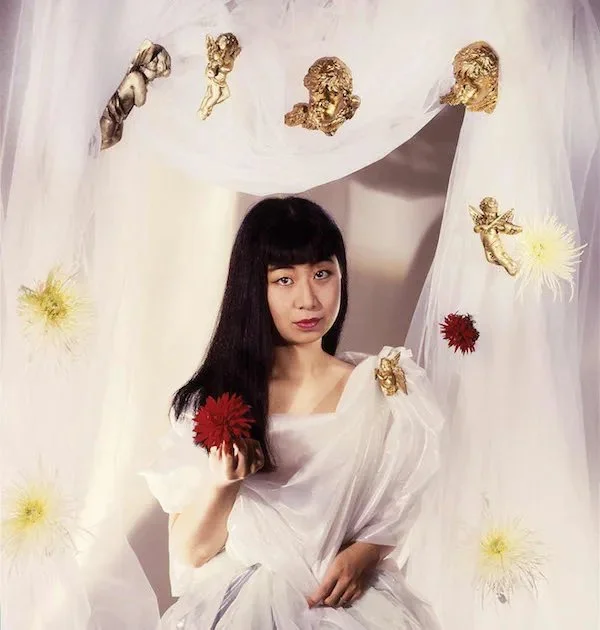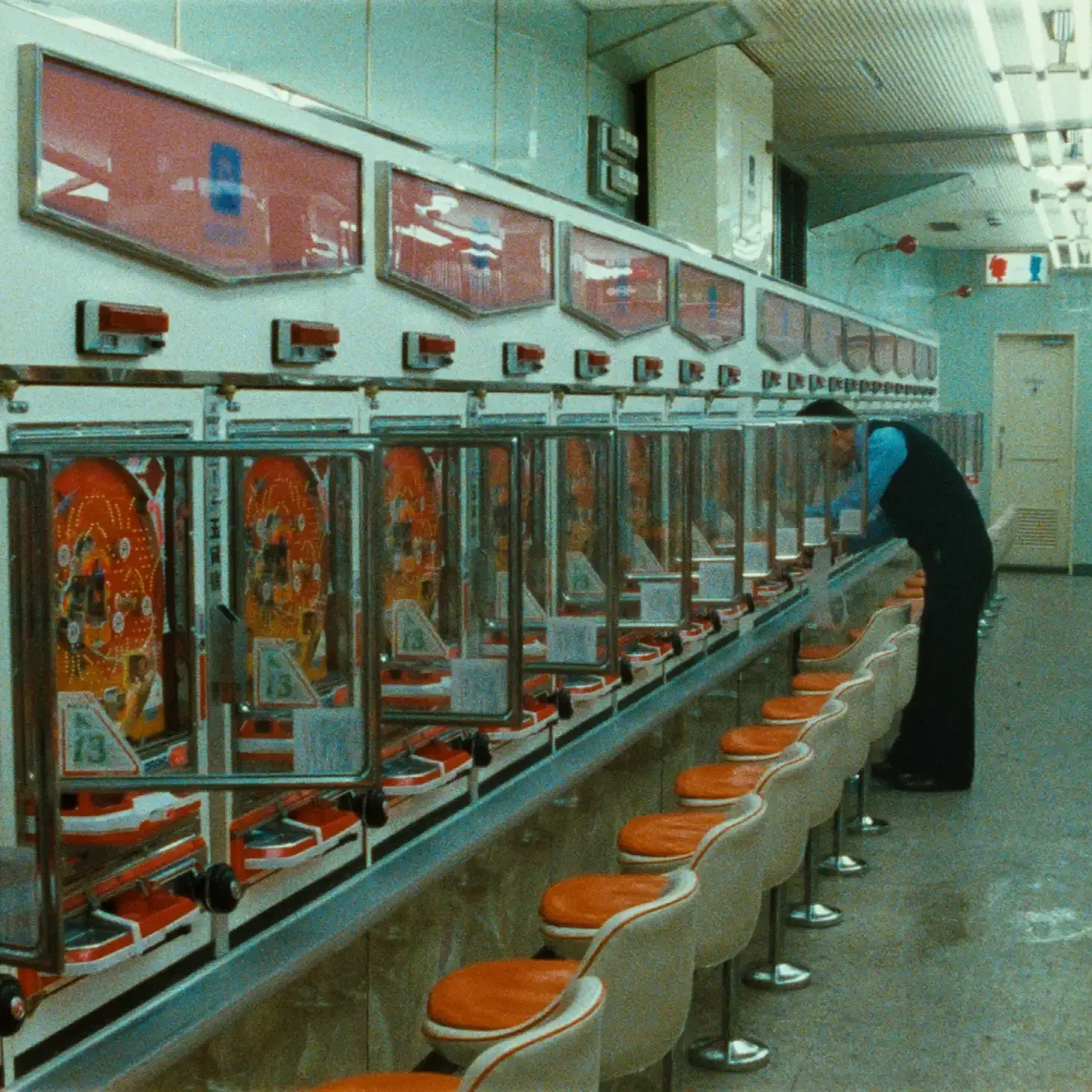SONOKO - The Underrated, Ethereal Album 'La Debutante'
© Sonoko
SONOKO is a project formed in the 1980s by Sonoko Yasuda, who originally came from Kyoto. Although some may associate the signature musical jewellery box French singing with the artist, it was the experimental scene of Kyoto that provided space for her musical self-discovery. Indeed, Kyoto’s counterculture is often overshadowed by the city’s historical heritage consisting of Buddhist temples, Shinto shrines and gardens. But what spawns from Kyoto’s history upon a deeper look is the popularity of live houses that dates back to the 1970s, and a growing experimental scene of the 80s that brought out the popularity of EP-4 and Merzbow. Meanwhile, SONOKO’s first step into the industry was through her first band Interon, which used delicate vocals that would bleed into her individual work and her debut album, ‘La Debutante’. She had been part of several musical collectives, but her unique vision could only have been achieved through her independent project.
The Winding Journey of Birthing ‘La Debutante’
Listening to ‘La Debutante’ is like coming into a little French girl’s room, seeing a blush pink canopy bed and inhaling a sweet smell of vanilla bean. There is an inherent airiness to Sonoko’s sound, as if she is singing a lullaby and pulling you into a soft afternoon doze. She covers various French songs like ‘La Poupée Qui Fait Non’, originally performed by Michel Polnareff, Brigitte Bardot’s ‘Une Histoire de Plage’, and Yves Simone’s ‘Gauloises Bleues’. The Kyoto artist adds a coquettish charm to the tracks, with ‘Une Histoire de Plage’ being reminiscent of stepping carefully on individual rocks, trying your best to keep balance and not fall into water. Even in my description of the songs, what might be becoming increasingly clear is the way it scratches a listener’s imagination in a perfect way. With each song, you feel immersed in a particular timeless place, as if trapped in a magical castle that has existed for centuries, but has long been forgotten.
So the question that might be emerging is where did the French influences come from, and how does Sonoko’s voice feel emblematic of a Parisian love story? Sonoko took a lot of inspiration from record labels such as Les Disques du Crépuscule, which was founded in 1980 by Michel Duval and Annik Honoré and released music under the genre umbrella of post-punk and new wave. She also was interested in Cherry Red Records, an English label founded by Iain McNay in 1978, and the Belgian label Crammed Discs, founded by Marc Hollander in 1981. The two demos she recorded and sent over to her desired labels in 1984 are now the opening and closing ones on the album, ‘Balcony Scene’ and ‘Swan Lake’. Crépuscule ended up rejecting her, and she took it upon herself to meet with Hollander in Tokyo and pitch the delicate beauty of her tracks to him.
After recording the songs for Cherry Red in Kyoto and Tokyo under the production of Kaoru Sato, Sonoko was eventually discouraged and felt misunderstood by the vision of Cherry Red. Moving to Paris, she pursued French language studies, and met with Hollander once again to show the work she had done with Sato up to that point. Hollander signed her under the terms that she would recommence the recording, this time in Paris. Sonoko was passionate about soaking her music in the potions of the French language, and that is where the assistance of Hollander became imperative.
Though he initially hired the English record producer Colin Newman for production help, Sonoko quickly realised Newman’s inability to capture the sexiness that she firmly believed had a place in her music. Listening to the album now, it is undeniable that the soft spoken lyrics create a mood of intimacy between the sound and the listener. Hollander, then, turned to the assistance of Vincent Kenism, who was a member of their avant garde band Aksak Maboul.
© Sonoko
Heavenly and Almost-Chilling Sexiness
Through the collaboration of Sonoko and Aksak Maboul, ‘La Debutante’ was shaped into an airy, graceful record, bringing a sense of Eden-like serenity. It is perfectly feminine and yet mysterious, with songs like ‘Sirene’ combining the European jewel box feel with Japanese story-telling. The song ‘In Heaven’ has a dreamy tone to it that encapsulates Sonoko’s vision of subtle sexiness, combining that with the almost hellish, eerie mood of the original by David Lynch, ‘In Heaven: Lady In The Radiator Song’. In the album, she takes upon pre-existing songs but makes them completely her own. The soundscape of the tracks is relatively simple, and in simplicity there is a sense of heavenly ease. Songs like ‘Cheri Cheri’ have repetitive lyrics, and Sonoko’s voice is reminiscent of a siren.
A song that stands out from the rest is ‘Marienbad’, where the half-spoken, half-sung lyrics create a sense that you are watching a film. There are no whispers, but the combination of the organ chords, and overlapping sounds and words consolidate the sense that trying to bind Sonoko by a singular genre is a futile attempt. I can’t help but think about how rooted Japanese folk traditions and fiction often is in subtle horror and creepiness, with many trends, such as ‘yami-kawaii’ being interested in the coexistence of the pretty and scary.
Similarly, jewel box sounds themselves and images of dolls and complete stillness are often associated with a sense that something might be wrong. The track ‘BB’ is especially suggestive of this idea, as the lullaby voice of Sonoko feels enchanting, and yet slightly chilling. The Japanese are often fascinated by the unknown, sadness, as well as questions of what happens to humans after they die, which has long manifested into urban legends and horror folk traditions. In Sonoko’s work, particularly songs like ‘Romeo Sama’, there is a sense of melancholy and uncertainty in the minor piano chords and lyrics like ‘憎いのあなたの名前だけ’ (‘I only hate your name’). Drawing on the Shakespearean tragedy Romeo and Juliet, she encapsulates the beautiful heartbreak.
The album took multiple years for Sonoko to record, but what her journey shows is that she never feared the efforts it would take. She had a strong vision, and she stuck to it, and the product that she has left for us is strikingly hers, with a sound that not many could replicate.








Explaining the glue between anime, fine art, toys, and fashion.